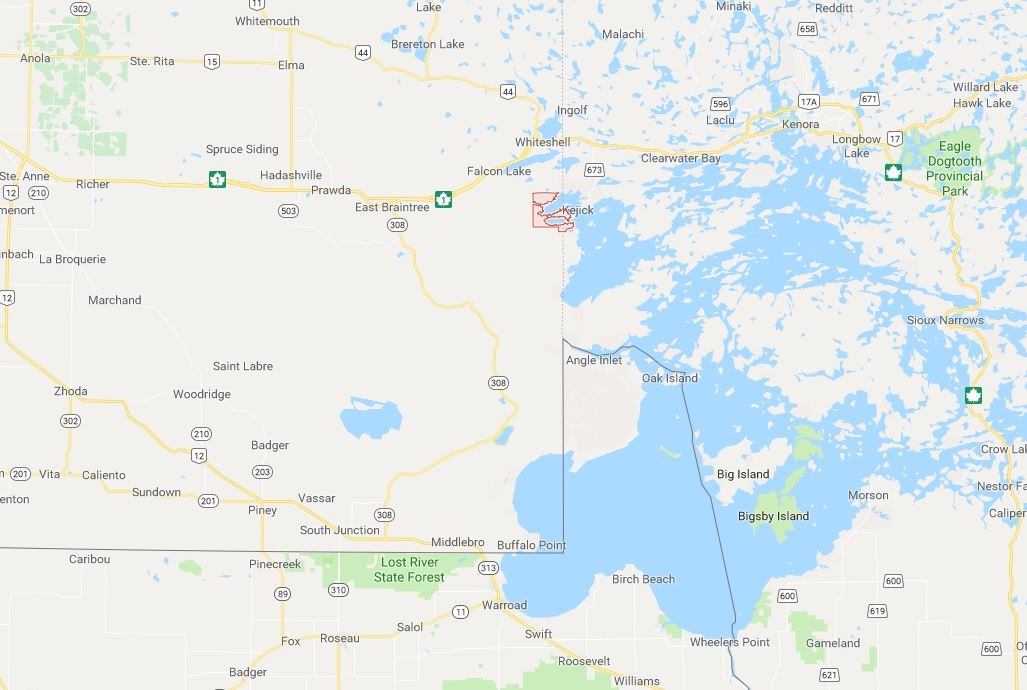The Tale of Shoal Lake 40
“It’s on the Manitoba-Ontario border, there are two First Nations involved, [the community] is not isolated, just south of the Trans-Canada Highway, it’s complex just getting there geographically, and incredibly complex getting there politically.” – Cuyler Cotton, Co-ordinator for both the Water Servicing and All Weather Road Projects
Background information
A century ago, the federal government expropriated land inhabited by the Shoal Lake 40 First Nation for construction of an aqueduct to provide water to the city of Winnipeg. Band members were moved onto a man-made island. Shoal Lake 40 has been under a boil water advisory since February 18, 1997. Shoal Lake 40 received considerable media attention and a personal visit from Prime Minister Justin Trudeau in 2016. Shoal Lake’s ‘Freedom Road’ opened in late 2018 and is expected to be fully paved by summer 2019. ‘Freedom Road’ will greatly improve the feasibility of building a water treatment plant in Shoal Lake 40. Economic development of Shoal Lake is enforced by the 1989 “Tripartite Agreement” between the City of Winnipeg, Province of Manitoba, and the Federal Government, sharing the cost of the road. The desire for complete independence means Shoal Lake seeks its own water treatment system, rather than being integrated with neighbouring reserves. There is considerable unease in the community about government inaction as there have been numerous feasibility studies and negotiations in the past with no progress since the current pumping systems were installed in 1996.
Lesson 4: The Tale of Shoal Lake 40
Grade: 10-12 (Science, Health, Social Studies)
Topic: The plight of Shoal Lake 40 and how they became an island as they were carved off a century ago for construction of an aqueduct to provide water to the city of Winnipeg. How Shoal Lake 40 has been under a boil water advisory since 1997.
Time: 1 Hour
Space requirement: Classroom
Materials: Smartboard or computer and projector, copies of the worksheet.
Objectives: Students will learn about what caused the problems in Shoal Lake 40, and how they have been under a boil water advisory since 1997.
Keywords: First Nation, Shoal Lake 40, Aqueduct
Directions/Procedures:
1. Present the “The Tale of Shoal Lake 40” PowerPoint presentation to the students. This will include the viewing of a fifteen-minute video.
2. Ask students what they think about the situation, have a class discussion. Some possible questions to discuss are:
a. What do you think about what happened in 1919 (a portion of Shoal Lake being annexed)?
b. How would you feel if you lived in Shoal Lake 40 at the time?
c. How would you feel if you lived in Shoal Lake 40 now?
d. How would you feel if you lived in Winnipeg now?
e. Do you think something should have been done earlier to help the residents of Shoal Lake 40? If so, when and what?
3. Distribute the “The Tale of Shoal Lake 40” worksheets to the students. If you want to make completing the worksheets easier for the students, you can put the PowerPoint presentation on the screen in a rotating manner by doing the following:
1. Click on Transitions
2. Change the Advance Slide option to After and enter a number of seconds (perhaps 15 seconds).
3. Click Apply To All
4. Click on Slide Show
5. Click on Set Up Slide Show
6. Under Show options select Loop continuously until ‘Esc’
7. Click OK
8. Click From Beginning
Evaluation: Can be based on their participation in the class discussion as well as their answers to the worksheet questions (see the Shoal Lake 40 Answer Key for Worksheets).
Resources
Issues in Shoal Lake 40 First Nation Extend Far Beyond Water. (2017). Retrieved from http://www.watertoday.ca/ts-fn-shoal-lake-issues-extend-beyond-water.asp
Shoal Lake 40 Drinking Water – Background Assessment: Information for the Ontario Regional Director General. (2018). Retrieved from http://www.atlas101.ca/pm/wp-content/uploads/2018/02/Shoal_Lake_BN1_AW.pdf
Shoal Lake 40 First Nation by the numbers. (2015). Retrieved from https://globalnews.ca/news/1879193/shoal-lake-40-first-nation-by-the-numbers/


